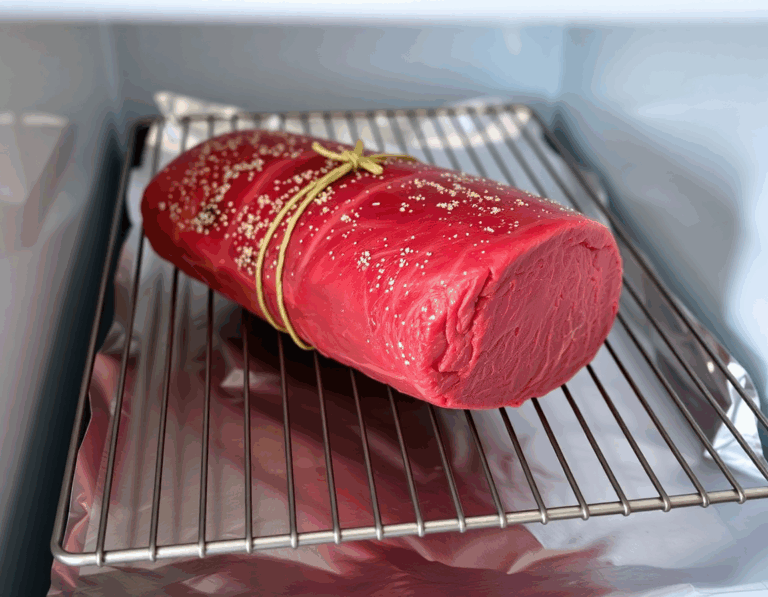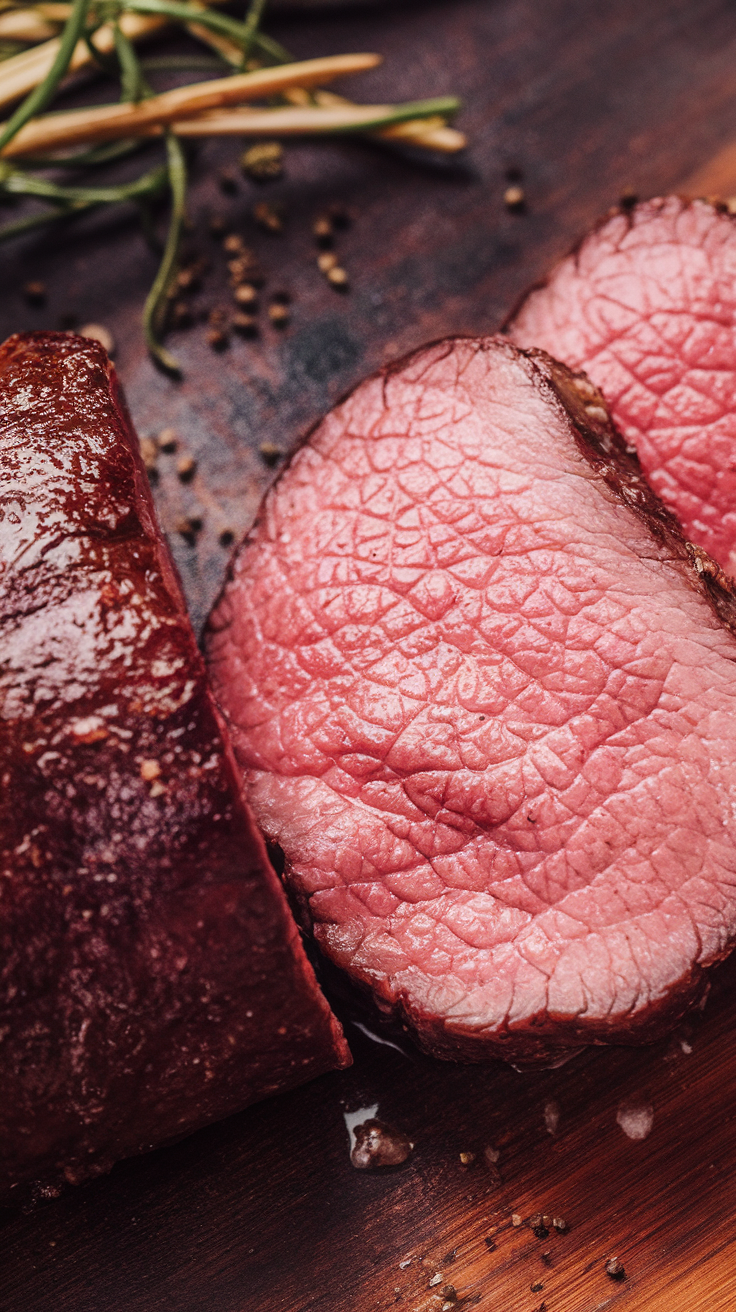Ah, the beef tenderloin—it’s like the crown jewel of meats, isn’t it? That perfect cut, tender and juicy, dripping with flavor. I remember last Thanksgiving when my uncle tried to carve it with a butter knife—hilarity ensued, but oh, how we savored each bite. Whether it’s a fancy dinner or just a Tuesday night treat, these recipes will make your taste buds dance like it’s 1999.
Steps
- Tie the beef tenderloin with butcher’s twine at 1-inch intervals and season it generously with salt and pepper. Place the tenderloin on a wire rack set over a foil-lined baking sheet and refrigerate it uncovered for at least one night and up to two nights.
- Preheat your oven to 225°F (107°C) and position the oven rack in the center. Roast the tenderloin on the prepared baking sheet until the internal temperature reaches 120 to 125°F (49 to 52°C), which should take about 2 to 3 hours. After roasting, let it rest at room temperature for 10 minutes and remove the twine.
- For broiling, adjust the oven rack to 6 inches from the broiler and preheat the broiler to high. In a skillet over high heat, swirl butter until it browns lightly and add thyme and shallots. Pour this mixture over the tenderloin, ensuring it’s evenly coated, and remove shallots from the top surface. Broil the tenderloin, turning every 30 seconds until browned on all sides and the internal temperature is 125°F (52°C) for rare or 130°F (54°C) for medium-rare, taking about 2 minutes.
- Alternatively, for stovetop finishing, heat butter in a skillet until it browns lightly, then add the tenderloin, shallots, and thyme. Continuously turn and baste the tenderloin with hot butter until browned on all sides, checking for an internal temperature of 125°F (52°C) for rare or 130°F (54°C) for medium-rare, which should take about 1.5 minutes.
- Allow the tenderloin to rest on a cutting board for 5 minutes. Slice it into 1/2-inch pieces, then sprinkle with minced chives and coarse sea salt. Serve with Horseradish Cream Sauce on the side.

Ingredients
- 1 center-cut trimmed beef tenderloin, 2 to 3 pounds (900 g to 1.4 kg)
- Kosher salt
- Freshly ground black pepper
- 4 tablespoons (57 g) unsalted butter
- 4 sprigs of thyme
- 1 shallot, roughly sliced
- Finely minced chives, for serving
- Coarse sea salt, such as fleur de sel or Maldon, for serving
- Horseradish Cream Sauce, for serving
FAQ
- How should I prepare beef tenderloin before cooking?
- It is recommended to season the beef tenderloin with salt and pepper, then tie it with butcher’s twine at 1-inch intervals. Let it rest uncovered in the refrigerator overnight or up to two nights for enhanced flavor and browning.
- What is the ideal cooking method for beef tenderloin to achieve even doneness?
- The reverse-sear method is ideal for cooking beef tenderloin. Start by slow-roasting the meat in a low-temperature oven until it reaches just below your target serving temperature. Then, sear it at a high temperature to achieve a crusty exterior and even doneness from edge to center.
- Why is fat content important when cooking beef tenderloin?
- Beef tenderloin has a low fat content, which affects its flavor and cooking process. Fat acts as an insulator, slowing down heat transfer. Without sufficient fat, tenderloin cooks faster, increasing the risk of overcooking outer layers while the center remains undercooked. Adding flavor through basting with butter and aromatics can enhance its taste.
- What is the best way to achieve a brown crust on beef tenderloin?
- To get a perfect brown crust, ensure the exterior of the meat is dry. Salting the meat and letting it rest can reduce moisture, facilitating better browning. Basting the tenderloin with browned butter infused with thyme and shallots, and using a broiler or skillet to sear, can quickly develop a flavorful crust.
- What is the optimal degree of doneness for beef tenderloin?
- For beef tenderloin, aim for edge-to-edge pinkness with a slightly rare center to avoid drying out the lean meat. Typically, a serving temperature of 125°F for rare or 130°F for medium-rare is ideal, ensuring tenderness and maintaining moisture.
Tips
- Pre-Salting and Resting: Season the tenderloin generously with salt and pepper the day before cooking. Allow it to rest uncovered in the refrigerator overnight. This step enhances the meat’s flavor and helps create a dry surface for better browning.
- Even Cooking Technique: Use the reverse sear method by slow-roasting the tenderloin at a low oven temperature of 225°F (107°C) until it reaches just below your desired doneness. This technique ensures a more uniform cook from edge to center.
- Basting for Flavor: Brown butter with thyme and shallots in a skillet and use it to baste the tenderloin before finishing under a broiler or stovetop. This adds depth of flavor and assists in achieving a beautiful crust.
- Proper Resting and Slicing: After cooking, let the tenderloin rest for about 5 minutes before slicing. This helps retain juices. Slice into medallions and serve with a sprinkling of coarse sea salt, chives, and optional horseradish cream sauce for added flavor.
Equipment
- Wire Cooling Rack – Used to elevate the tenderloin for even airflow and cooking in the oven.
- Rimmed Baking Sheet – A sturdy pan to catch drippings and support the wire rack.
- Probe Thermometer – Essential for accurately measuring the internal temperature of the meat for perfect doneness.
- Butcher’s Twine – Used for tying the tenderloin to ensure even cooking.
